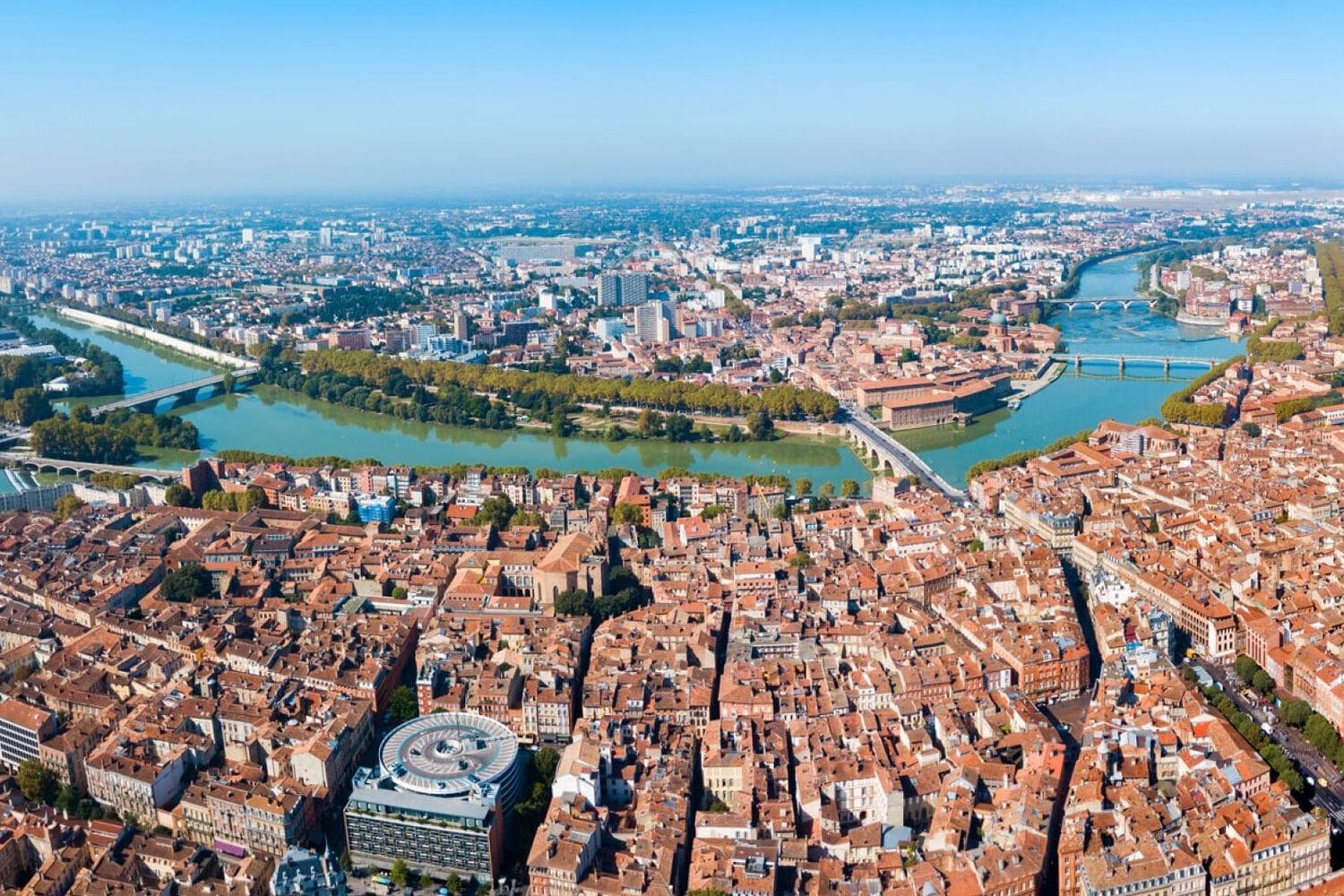Toulouse is one of the most beautiful and vibrant cities in southern France, where medieval architecture blends seamlessly with modern technology and Mediterranean charm. Known as the Pink City because of the distinctive color of its brick buildings, Toulouse is a place where history, science, aviation, and culture coexist in perfect harmony. Its unique character makes it stand out not only in France but throughout Europe. Below are fascinating and educational facts about Toulouse that you may not have known.
- Toulouse earned its nickname, the Pink City, because of the rosy-orange bricks used to build its historic structures. The bricks were made from local clay with a naturally warm pink hue, giving the city a soft and glowing atmosphere, especially at sunset. This distinctive color makes Toulouse one of the most picturesque cities in France.
- The city is located in southwestern France on the River Garonne. It is the fourth-largest city in the country after Paris, Marseille, and Lyon. Thanks to its strategic position, Toulouse has long been an important trading hub between the Mediterranean Sea and the Atlantic Ocean.
- The history of Toulouse spans more than two thousand years. It was originally founded by the Gauls and later became a Roman settlement known as Tolosa. During the Middle Ages, Toulouse developed into a major center of culture, religion, and learning in southern France.
- In medieval times, Toulouse was the capital of a powerful county that enjoyed significant independence. Trade, architecture, and poetry flourished there, supported by the local nobility. The troubadours who sang in the Occitan language made Toulouse a cultural beacon of the medieval world.
- One of the city’s most famous landmarks is the Basilica of Saint-Sernin, a UNESCO World Heritage Site. It is one of the largest Romanesque churches in Europe. Construction began in the 11th century, and the basilica remains a masterpiece of medieval architecture.
- The Capitole Square is the heart of Toulouse and the location of the city hall. Surrounded by red-brick buildings and decorated with zodiac mosaics, the square is the site of major events, concerts, and celebrations. It perfectly embodies the vibrant spirit of the city.
- Toulouse is one of the world’s leading centers of aviation and space industries. The headquarters of Airbus, one of the largest aircraft manufacturers on Earth, is located here. The city is also home to the Cité de l’Espace — a science and education center dedicated to space exploration.
- The Cité de l’Espace (City of Space) is one of France’s most famous science museums. Visitors can see real rockets and satellite models and even experience the feeling of weightlessness in simulators. It attracts thousands of tourists, families, and students every year.
- Toulouse is also a historic center of education and research. The University of Toulouse was founded in 1229 and is one of the oldest universities in Europe. Today, more than 100,000 students study in the city, making it one of the youngest and most dynamic cities in France.
- Local cuisine is an important part of Toulouse’s identity. Its most famous dish is cassoulet, a rich stew made from beans, sausage, and meat, cooked slowly over low heat. The city is also known for its Toulouse sausages, foie gras, Roquefort cheese, and wines from nearby vineyards.
- Toulouse is home to one of France’s oldest markets — the Marché Victor Hugo. Here you can find fresh produce, meats, cheeses, bread, and local wines. It is considered the gastronomic heart of the city and is beloved by both residents and visitors.
- The cultural scene in Toulouse is rich and diverse. The city boasts numerous theaters, opera houses, museums, and art galleries. The Augustins Museum, the Museum of Natural History, and the Museum of Modern Art are among the most popular attractions for art and history lovers.
- The River Garonne is an inseparable part of the city’s landscape. Its scenic banks are perfect for walks, bike rides, and picnics. In the evening, the reflection of the city lights on the water creates a magical and romantic view.
- Toulouse’s architecture is a blend of styles — Gothic, Renaissance, and contemporary. Visitors can admire medieval monasteries standing alongside futuristic structures. This combination makes the city an open-air museum of architecture.
- The climate of Toulouse is mild and sunny. Winters are short and rainy, while summers are warm and dry. These pleasant conditions make it a comfortable city to live in and visit all year round.
- The city hosts numerous music festivals, such as Jazz sur son 31 and Piano aux Jacobins. These events attract musicians and audiences from around the world. During the festivals, Toulouse becomes a lively hub of European culture.
- Today, Toulouse is also an important center for science and innovation. Research in artificial intelligence, biotechnology, and energy is rapidly developing here. For this reason, it is often called the French Silicon Valley.
- Despite its modern development, Toulouse has preserved the charm of its old town. Narrow streets, cozy cafés, and pink façades give the city a warm and inviting atmosphere. It is a place where the past and present coexist in harmony.
- Toulouse is the birthplace of the famous artist Henri de Toulouse-Lautrec. His works left a lasting mark on world art. His name will forever be linked to the cultural heritage of his hometown.
- The city has numerous twin cities around the world, including Kyiv, Stuttgart, and Treviso. These partnerships reflect Toulouse’s openness to international cooperation and cultural exchange.
Toulouse is a city where history, culture, and innovation come together to create something truly unique. It is a place of inspiration, creativity, and beauty, where the past and the future live side by side. These fascinating facts show that Toulouse is not just a French city, but a true center of imagination and progress.





